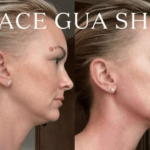People like getting manicures and pedicures at nail salons because they are a soothing and pampering way to improve the appearance of their nails. In spite of the apparent safety of visiting a nail salon, many people are unaware of the possible threat posed by the harmful substances used there.
Nail paint, polish remover, and other salon products include chemicals that may be very hazardous to the health of both salon employees and consumers. Learn more about the dangers posed by these poisonous substances and the steps you can take to safeguard yourself in this article.
1. Formaldehyde
Formaldehyde is a chemical that is widely used in nail hardeners and nail polishes, despite the fact that it is a recognized carcinogen. This chemical has been linked to a variety of adverse health effects, including irritation of the respiratory tract, the eyes, and the skin, as well as allergic responses.
Exposure for a prolonged period of time has been associated with an increased risk of acquiring some kinds of cancer, including lung and nasopharyngeal cancer.
2. Toluene
Toluene is a kind of solvent that may be found in nail polish as well as removers for nail polish. It makes the polish easier to apply and provides it a smoother finish. Toluene may induce symptoms such as nausea, dizziness, and headaches when it is inhaled or comes into contact with the skin.
When exposed for longer periods of time, people run the risk of developing more serious health problems, including harm to their reproductive and brain systems. Due to the fact that toluene has been linked to the occurrence of developmental issues in the baby, pregnant women should exercise an extra high degree of caution.
3. Dibutyl Phthalate (DBP)
In order to give nail polishes a more flexible and chip-resistant finish, DBP is often used as a plasticizer in their formulas. On the other hand, it is a well-known endocrine disruptor that has been associated with hormone imbalances, difficulties with reproduction, and developmental disorders in children.
There are still certain nail products on the market that include DBP, despite the fact that its usage in cosmetics has been limited or prohibited in several countries.
4. Formaldehyde Resin
Formaldehyde resin is a formaldehyde byproduct that is often used in the production of nail polishes as well as adhesives. Even while it is less harmful than formaldehyde itself, it nevertheless has the potential to induce allergic responses and irritation to the skin.
Particular caution should be used by those who have skin that is easily irritated or who are prone to allergic reactions.
5. Camphor
In order to provide a glossy appearance, camphor is often used in nail polish, and it is also a component of several nail hardeners. In extreme circumstances, however, inhaling camphor or being exposed to it in large amounts may cause symptoms such as dizziness, nausea, and even convulsions.
Women who are pregnant and others who have diseases that affect their respiratory system should stay away from products that include camphor.
How to Protecting Yourself
Even if the existence of these harmful compounds at nail salons is the reason for worry, there are measures that you can take to safeguard your health and reduce the amount of time that you are exposed to them:
- Choose safer alternatives: Look for nail polishes that are marked “3-free,” “5-free,” or “10-free,” which means that they do not include any of the potentially dangerous ingredients listed on the label. Choose non-toxic nail paints like those made from natural ingredients or water.
- Ventilation is key: Make sure the nail shop has enough ventilation to prevent customers from breathing in harmful chemicals. To increase ventilation, open windows or turn on exhaust fans.
- Bring your own products: To lessen the likelihood of being exposed to potentially dangerous chemicals, think about bringing your own nail paint and remover to the salon.
- Stay informed: Learn about the most recent findings and rules pertaining to cosmetics’ safety. Look for well-known businesses that are committed to using safe ingredients.
Conclusion
It’s important to be aware of the hazards linked with the harmful substances typically present in manicure treatments, despite the fact that nail salons may be a refuge for relaxation and self-care.
You can have beautiful nails without putting your health at risk if you do your research, choose healthy products, and speak out for change at manicure salons. Always put your health and safety first when making beauty and self-care decisions.



